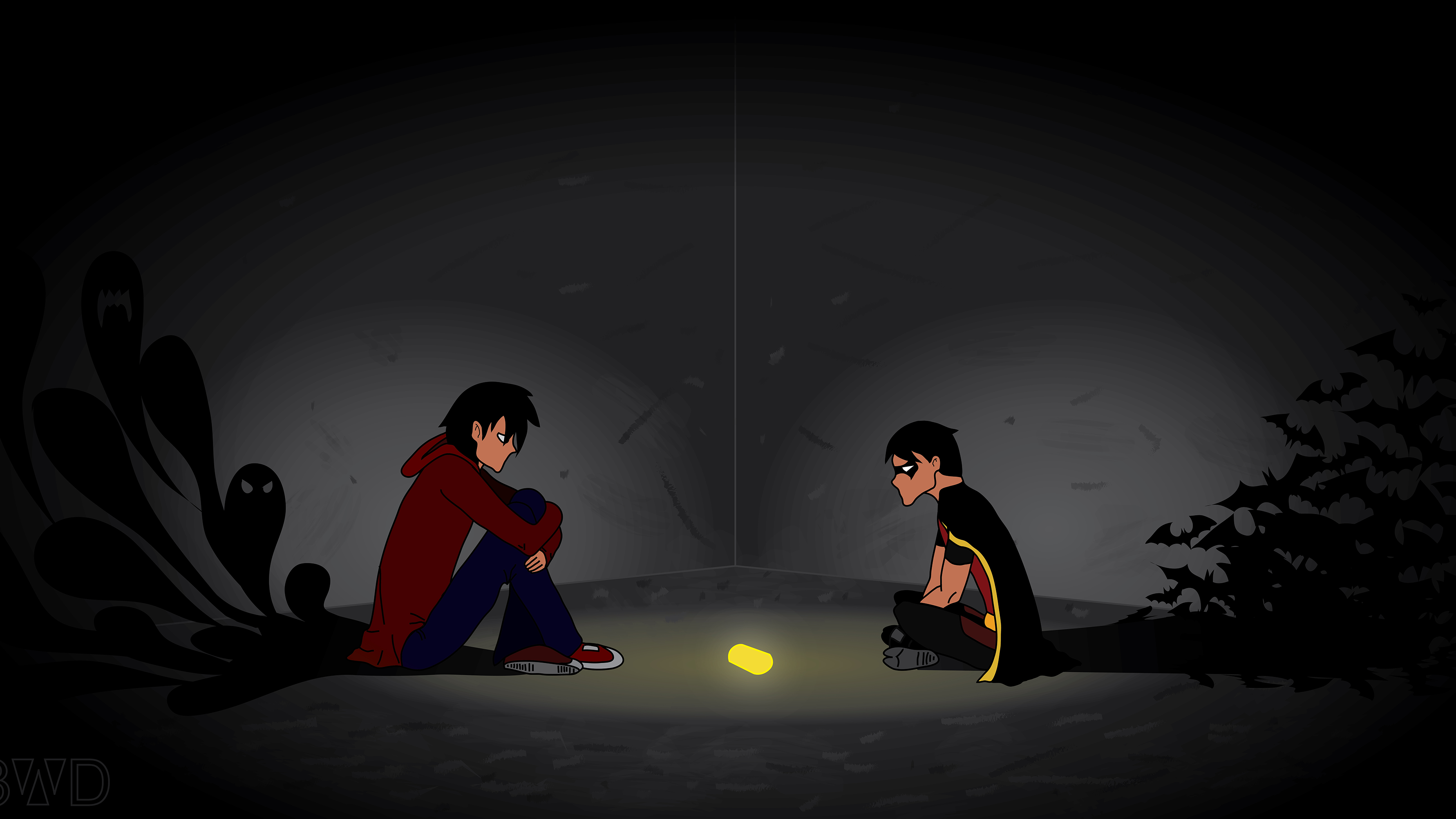Hello and welcome to the mess! I’m ThreeWaysDivided, also known as 3WD.
Statistically you are here from either my Young Justice: Deathly Weapons fanfic (in which case yes, I’m still writing it, it’s just that Life Happens So Much) or the Van Gogh quote (in which case, in the interest of not deceiving you: this is not a quote/inspo blog, I do that sometimes but for the most part we post nonsense here, sir).
Anything important we should know about you?
I am a legal adult and have been for several years, and if that is something you have boundaries about then that is A-Okay.
Are you in other places?
I am! You can find me writing on Fanfiction.net and Archive of Our Own, and goofing about on DeviantArt and Discord (ThreeWaysDivided#3586).
What can we find here?
Madness. A rather quiet sort of madness involving plentiful food and plushies, in which we at least try to be balanced and approach things in good faith but still - this way lies madness.
But I suppose you mean content…
Fanfiction (#my writing)
As mentioned, my main fic is Young Justice: Deathly Weapons, a YJ x DP crossover (FFN | AO3). The #young justice: deathly weapons tag will give you all the content, asks etc. about it, or use #yj:dw if you only want to see chapter release posts and my ‘official’ art pieces.
If you want to know what I’m up to you can take a peek under #writing update, or send an ask should you need to tap the glass more vigorously. There is also a discord server.
Wondering if you can make something for, or use part of my work in a thing? See my Transformational Works Permission Statement.
Talking About Writing (#writing advice)
Sometimes I write my own thoughts, sometimes I share other posts, either way here we talk about the meta of story-telling, analyse how stories and writing techniques work, chat about tropes and all that good stuff.
Big Essays (#scattered thoughts)
Ever wondered what those long Youtube media videoessays would look like if produced by someone with no film or editing skills? Ever thought they were just too audiovisual and wished you could read a transcript instead? Boy do I have a thing for you!
You may recognise such smash hits as Tumblr Post Plus is Not Your Friend, Thoughts About Sam Manson, Young Justice’s Terrible Failure of Narrative and Why Does the Danny Phantom Fandom Attract So Many Asexuals?
Art (#my art), Cooking (#3WD Cooks) and Fabric Craft (#sewing)
Sometimes I paint, sometimes I draw, sometimes I bake and sometimes I sew my own pokedolls, whatever takes your fancy.
Fun/ Cool/ Inspiring Anecdotes (#amazing stories)
None of these are mine, they’re just stories I found around and think are Neat.
Short Stories (#original writing)
Cool original fiction pieces by other writers.
Animal Shenanigans (#animal shenanigans)
Sadly I do not own animals but I love seeing the wild things they get up to.
Interesting Quotes (#quote of the day)
Because sometimes I am an inspo blog.
Photography (#photography)
A collection of other’s photos, mostly of natural world stuff, especially birds, flowers and insects.
Fandom Nonsense
In which there be art, meta, fic and other assorted delights. Tagged by fandom, most commonly Danny Phantom, Batman, Young Justice, Avatar: The Last Airbender, Fullmetal Alchemist, My Hero Academia, Hollow Knight, Dan Jones & Dragons, Marvel and The Dragon Prince.
Is there anything I might need to watch out for?
I try to keep my blog relatively “all ages” so you won’t see explicit or graphic content, NSFW or even much swearing here. That said sometimes I do talk about heavy or challenging topics such as mental health, loss, relationships and abuse.
I try to tag appropriately so everyone can sort and filter according to their needs but if you need an extra tag on a post then please feel free to let me know.









